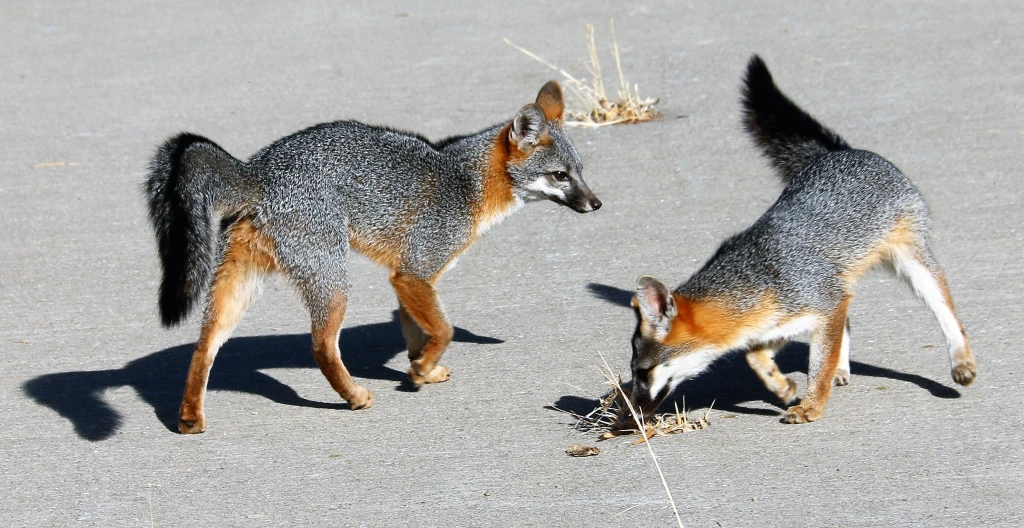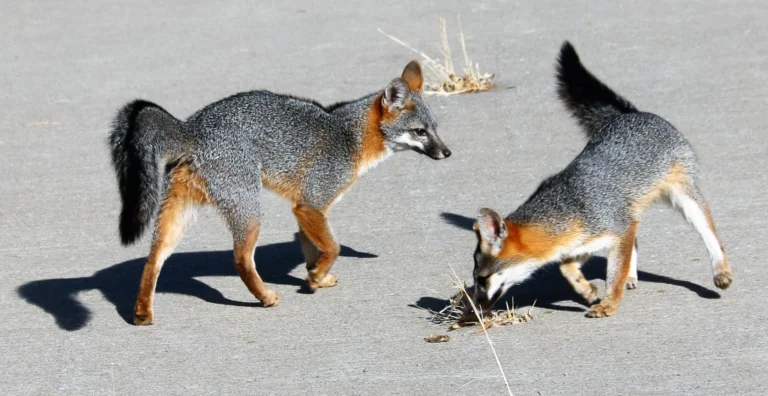So, now that we had the distance that she’d traveled it brought up a question: Given that the gray fox is “… 12 – 16 inches in height measured at the shoulder. It can weigh from 7 to 14 pounds but 10 -12 pounds is average,” (Google search page gray fox height and weight) how can such a small mammal as this successfully traverse the approximately 2.4 miles of landscape, knowing where to move through dense thickets, across grasslands, knowing where to cross the two creeks, knowing where to make a left turn across a broad golf course, and finally, after about a week’s travel get to her destination? How did she, or any other small mammal, know where it needed to go to get from point A and complete its journey at point B? Scent marking trails, maybe? Having once before travelled that trek, using memory, a map in its mind to find its way?
Gray Foxes General Health
This pair is young, most likely first-year dispersals. They appear to be vibrant and healthy although there have been a couple of scat deposits that were soft like diarrhea. The gray fox Flop seems to be healthy too.
Total Numbers of Gray Foxes in the Palo Alto Baylands Nature Preserve
As of November 2019, we have two adult gray foxes living in the Palo Alto Baylands Nature Preserve.







